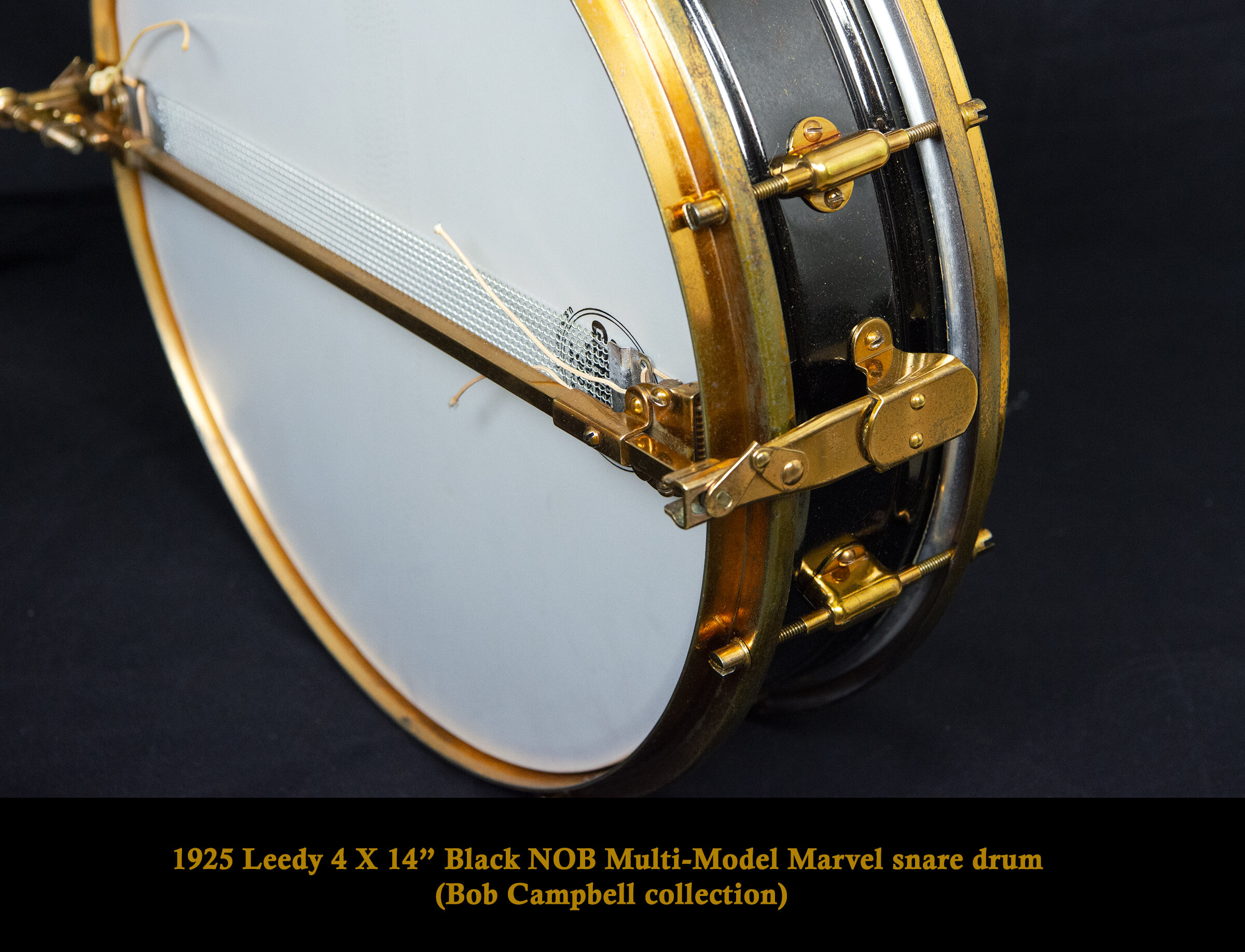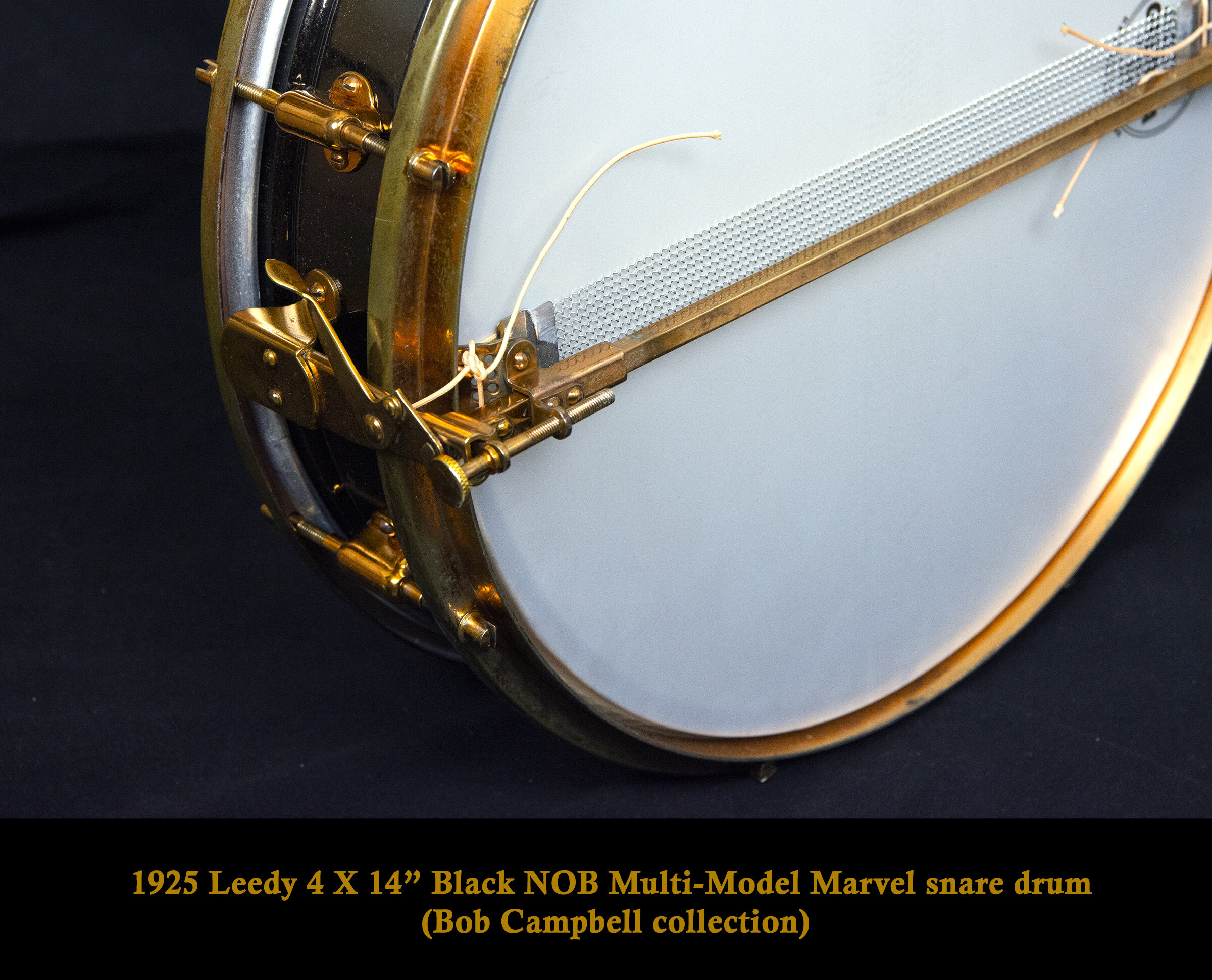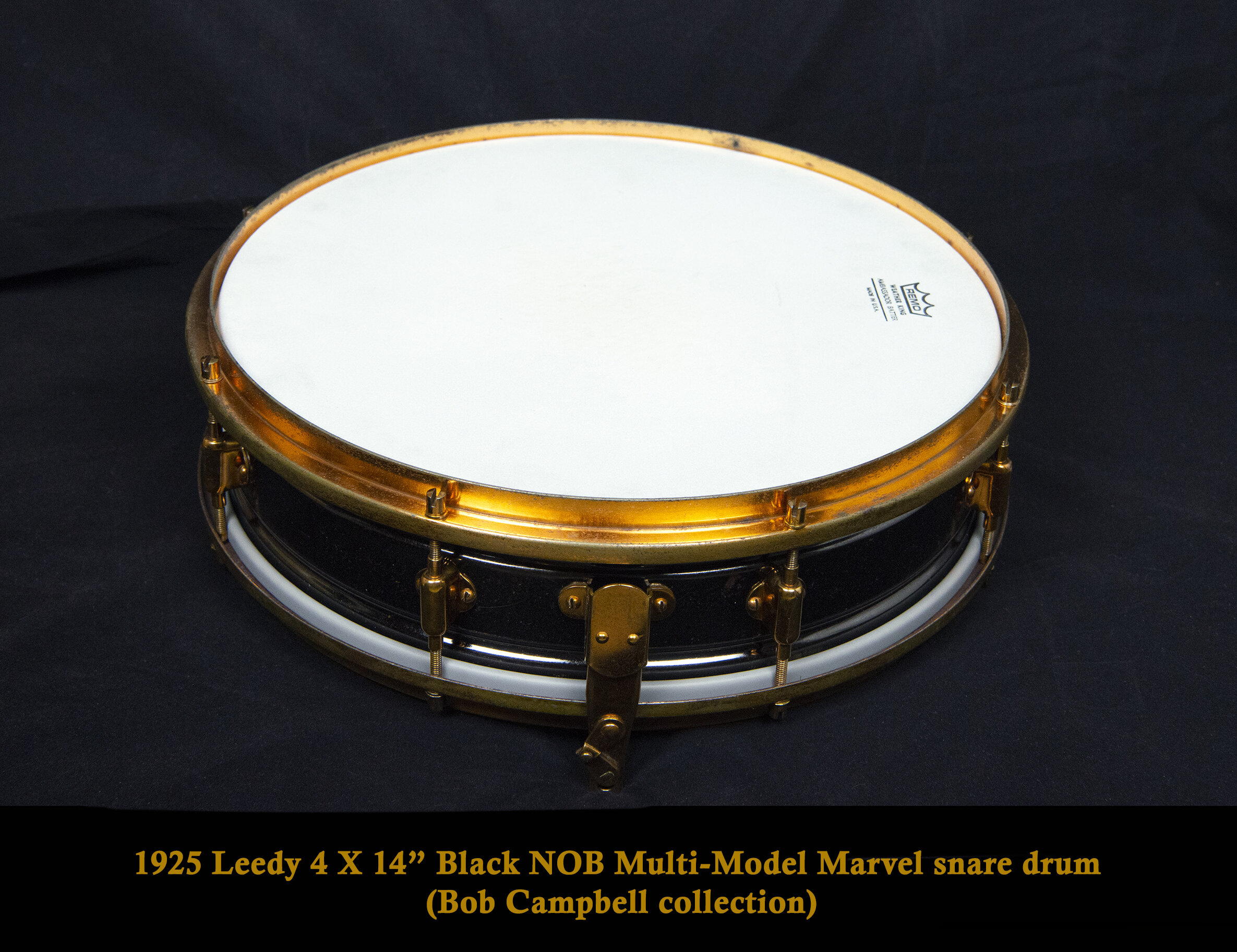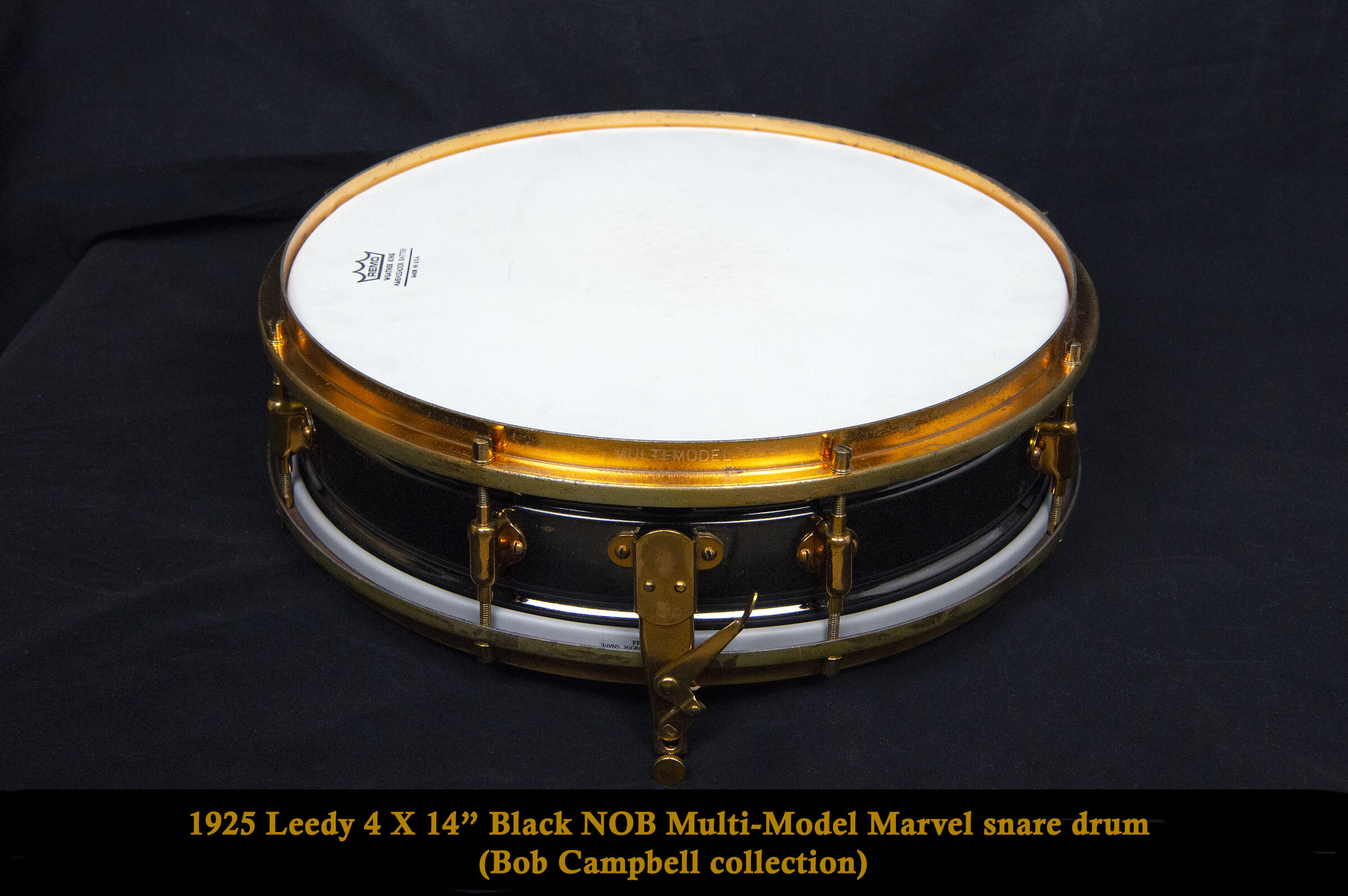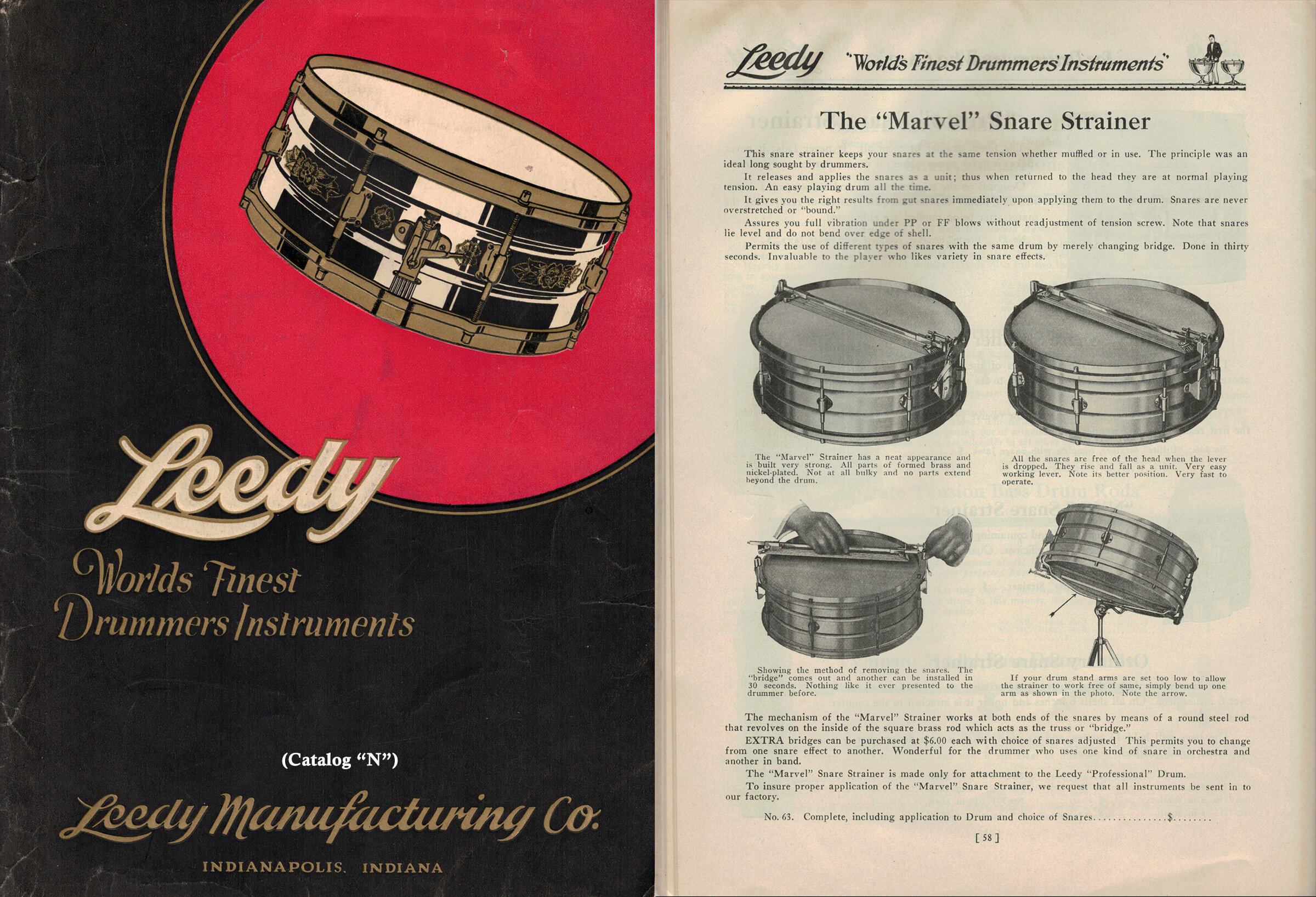Mike Curotto’s book, “The Curotto Collection: Vol. 1” was published in 2007 with wonderful pics and descriptions of rare vintage drums. I remember leafing through the pages of beautiful drum photos and coming across a Leedy snare drum with a mechanism I had not seen before. This drum was an engraved 5 X 14” Leedy Black Elite with a “Marvel” strainer. The strainer incorporated a parallel-type mechanism where the snares were attached to a rod that extended end to end, with a tensioning screw at the end parallel with the head. When released, the snare wires would move up/down in unison with even tension. I think Rogers Dynasonic fans would greatly appreciate this strainer. I found the design fascinating and ingenious and only then realized that Leedy had a parallel strainer developed way back in the mid-1920’s. I put a Leedy Marvel snare drum on my wish of must-haves for my collection and began my search. That search took over a decade.
I eventually found a Leedy Marvel on Reverb at a Japanese storefront. This particular drum was a 4 x14”, 8-lug, Black Nickel-Over-Brass Multi-Model (non-engraved) with Nobby Gold hardware and a Marvelstrainer amazingly intact with no missing parts (other than replaced heads and wires). Thankfully, the drum survived the travel across continents and oceans to my home in Indiana. As I often do with vintage black nickel drums, I sent it Mike Curotto for a thorough cleaning and re-lacquering (to prevent any further oxidation of the shell or hoops; as Mike has said, “Rust never sleeps”). While the Marvel snare was out for restoration, I did a bit of homework to research more about this unique parallel-release snare mechanism.
The “Marvel” strainer was only shown in the 1925 Catalog “N” and never reappeared. This novel strainer was intended to offer drummers a quick snare release mechanism with the ability to swap out bridges with different snares, e.g., wires, gut. I assume the lack of further mention in catalogs was due to the strainer design not being very successful, for reasons I’ll speculate upon later. It also makes these drums quite rare. I have only seen one other in Black Elite (Mike Curotto’s) and two more on other Leedy snare drums (not black elites). Mike Curotto stated that, “Other than yours and mine, I’ve only seen or heard maybe 1-2 more. I do have a few wooden ones and a few 2-screw and 4-screw metal Multi-Models. A while back Harry Cangany mentioned to me that the Marvel strainer could be bought separately and retro-fitted as the hole patterns are the same as the other Leedy strainers of the era, so maybe some drummers of yesteryear wanted to ‘upgrade’…?” The Marvel strainer is listed separately as a part in the Catalog “N” price sheet insert, so this seems quite conceivable (catalog part #63 listed as $7.50 each).
Leedy Catalog “N” described the “Marvel” strainer as having a “neat appearance and built very strong…Not at all bulky and no parts extend beyond the drum. All the snares are free of the head when the lever is dropped. They rise and fall as a unit…Assures you full vibration under PP or FF blows without readjustment of the tension screw. Note that snares lie level and do not bend over the edge of the shell…Very easy working lever. Note its better position. Very fast to operate…The mechanism of the “Marvel strainer works at both ends of the snares by means of a round steel rod that revolves on the inside of the square brass rod which acts as a truss or “bridge”. EXTRA bridges can be purchased at $6.00 each with choice of snares adjusted. This permits you to change from one snare effect to another…Done in 30 seconds… Wonderful for the drummer who uses one kind of snare in orchestra and another in band.”
This Multi-Model Marvel is truly a lovely drum and extremely well-preserved. The Marvel strainer works quite nicely and smoothly, applying even tension across all snares. So why do I think it wasn’t successful? First off, the bridge mechanism extends about 1 3/8” from the bottom. For snare stands of the time, this overhang could be problematic. Catalog “N” suggests this complication where it states, “If your drum stand arms are set too low to allow the strainer to work free of same, simply bend up one arm as shown in the photo.” Personally, I would not be in favor of bending an arm of my snare drum stand basket. Also, while minor, the tension rod screw sits beneath the bottom head. If you sit high in your drum stool (or have short arms), re-tensioning on the fly could require an awkward reach.
All that being said, the Leedy Marvel was really quite innovative and functionally quite effective. I do wonder if its design did influence or perhaps provide the impetus for future parallel strainer designs, like the Dynasonic.

